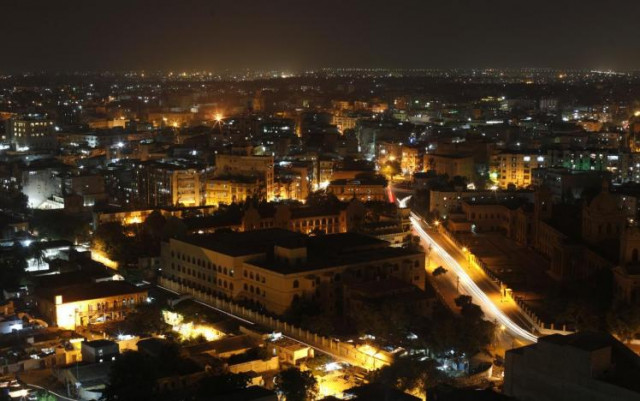Sindh’s economy - challenges and solutions
Policymakers must improve governance, remove bottlenecks, raise productivity

View of city skyline at dusk in Karachi. PHOTO: REUTERS
Taking the same philosophy and projecting it on a country level, regional studies explain the underlying economic and social trends of regions under the wider national fabric.
A recent book, “The Economy of Modern Sindh: Opportunities Lost and Lessons for the Future” by Ishrat Husain, Aijaz A Qureshi and Nadeem Hussain, offers a comprehensive overview of different aspects of Sindh’s economy from education to public finance.
Each of the authors has vast experience in public finance, development practice and research. This makes the book and the suggestions it offers very valuable for the policymakers. This article reviews the book, focusing on the challenges that the Sindh economy has faced over time and some of the solutions that the authors propose to address them.
Sindh’s economy
Sindh is one of the richest provinces of the federation. Its share in the national gross domestic product (GDP) is estimated at around 30% while its share in the population is around 23%.
On the other hand, Punjab is the most populous province with a share in the population of around 53% while it contributes 54% to the national economy. These two provinces account for more than four-fifths of the national income.
Various reports including the Sindh Growth Strategy by the World Bank have shown that the per capita income of the province has been declining over time. The book shows that the main reason for weak economic growth and falling per capita income has been declining productivity.
It also narrates other factors for the falling productivity such as concentration in low productivity activities such as retail and wholesale trade, therefore depressing the overall productivity, and poor outcome in education and health, leading to an adverse impact on the quality of human capital, underemployment and lower-than-minimum wage in informal activities.
Further disaggregating Sindh’s economy into urban and rural areas gives more clues to the fall in per capita income over time. Rural Sindh has experienced negative growth while urban Sindh has enjoyed positive growth.
The main reason behind the rural-urban divide is its congruence with the ethnic and linguistic divide. Rural Sindh with 38% literacy rate, 62% immunisation rate and 58% enrolment rate at the primary level is worse than many countries in sub-Saharan Africa.
Areas of concern
Some other areas of the economy have been highlighted in the book which needs immediate attention of the policymakers.
First is the issue of water. Acute water shortages due to mismanagement have hit small farmers, depriving them of adequate and timely availability of water for their crops. Influential landlords, in collusion with officials of the irrigation department, have tampered with water modules as a means of water distribution to their lands.
Another area of immediate concern is how to provide employment opportunities to the ever-increasing population. The youth bulge can pose social and economic challenges if they were not given adequate opportunities for employment.
Moreover, Sindh’s social indicators have also stagnated and not moved in tandem with other provinces. Literacy rate remains poor with gender disparity stark and health outcome showing no improvement.
Some solutions
The authors have proposed some key growth strategies that the policymakers should employ to solve the multiple issues that have beset the province over the years.
The first and the foremost one is to improve governance and institutional capacity of the province and district governments, thus enhancing accountability, transparency and the rule of law. The second issue involves making the urban economy more competitive and efficient by removing infrastructural bottlenecks and removing distortions in land, labour and goods markets.
Third, the productivity of water, agriculture, and livestock must be enhanced. Fourth, provincial revenues must be increased by reforming the urban property tax, agriculture income tax and charges on irrigation water.
Fifth, service delivery must be improved through better provision of basic services such as education and health. The province must implement these steps in order to enter a new era of progress and prosperity.
The writer is a doctoral candidate at The Bartlett, UCL
Published in The Express Tribune, September 2nd, 2019.
Like Business on Facebook, follow @TribuneBiz on Twitter to stay informed and join in the conversation.


















COMMENTS
Comments are moderated and generally will be posted if they are on-topic and not abusive.
For more information, please see our Comments FAQ